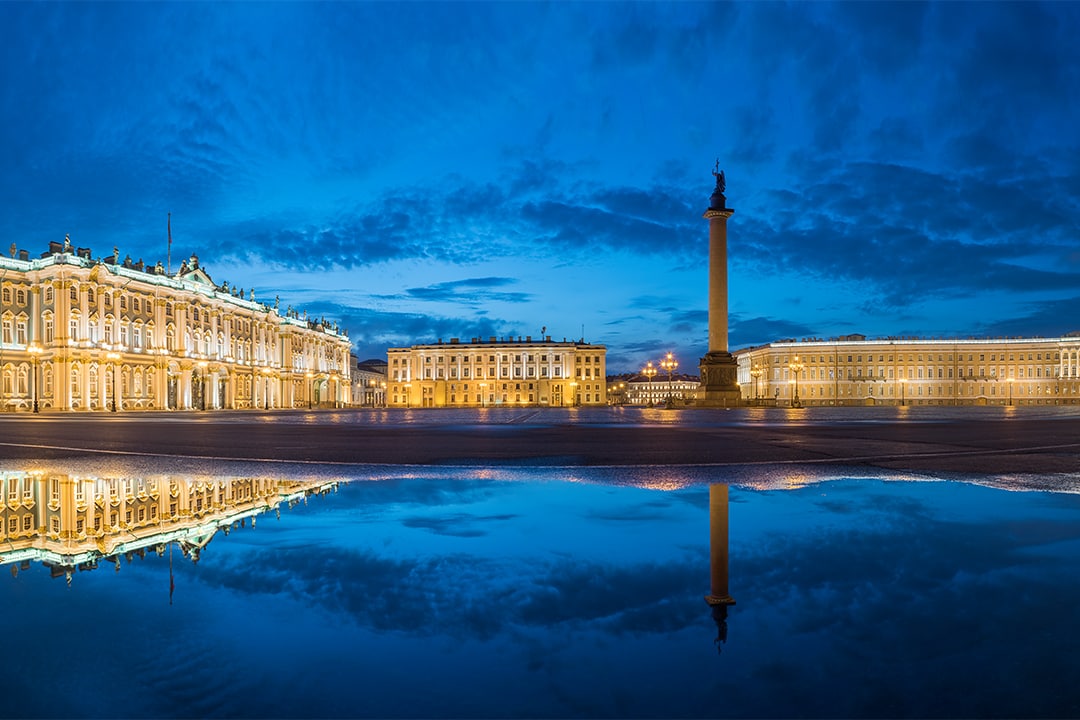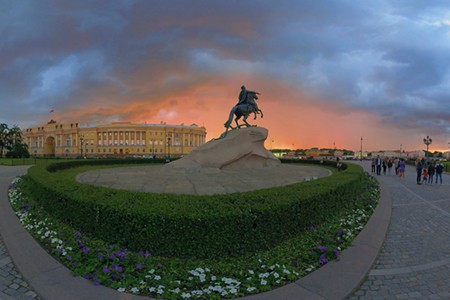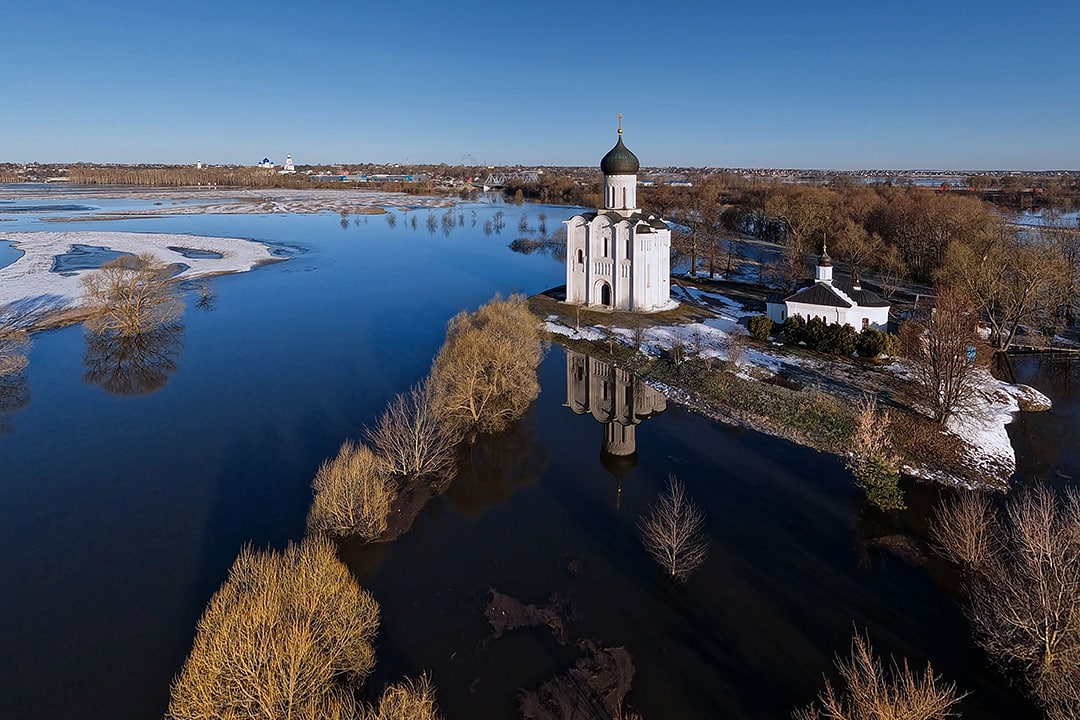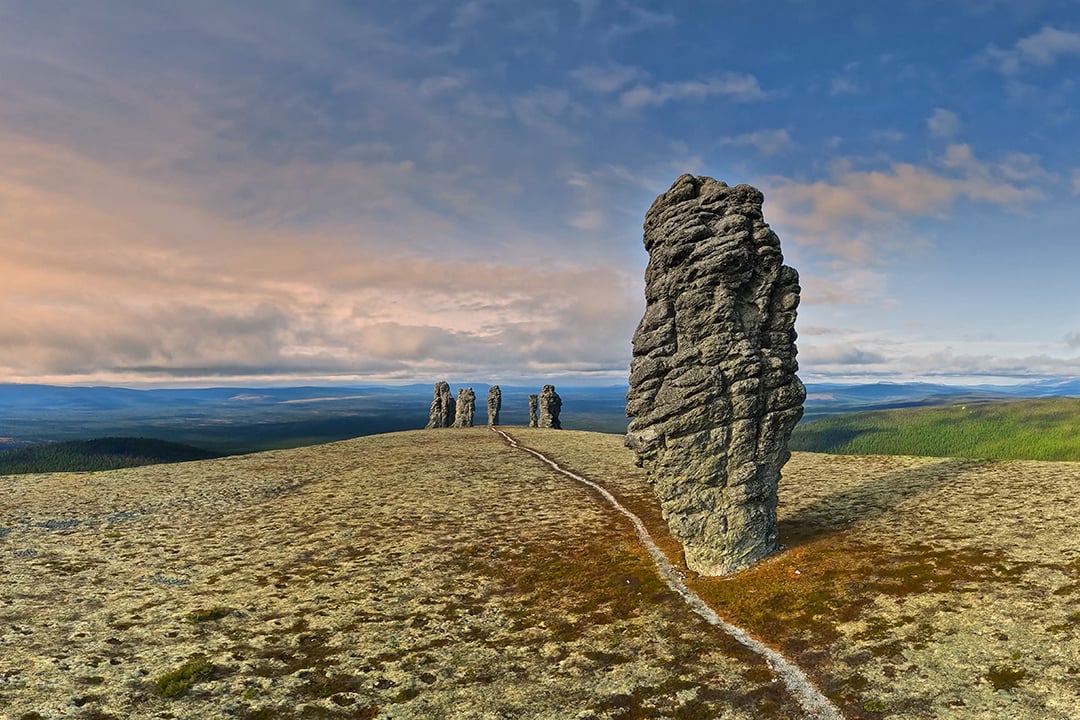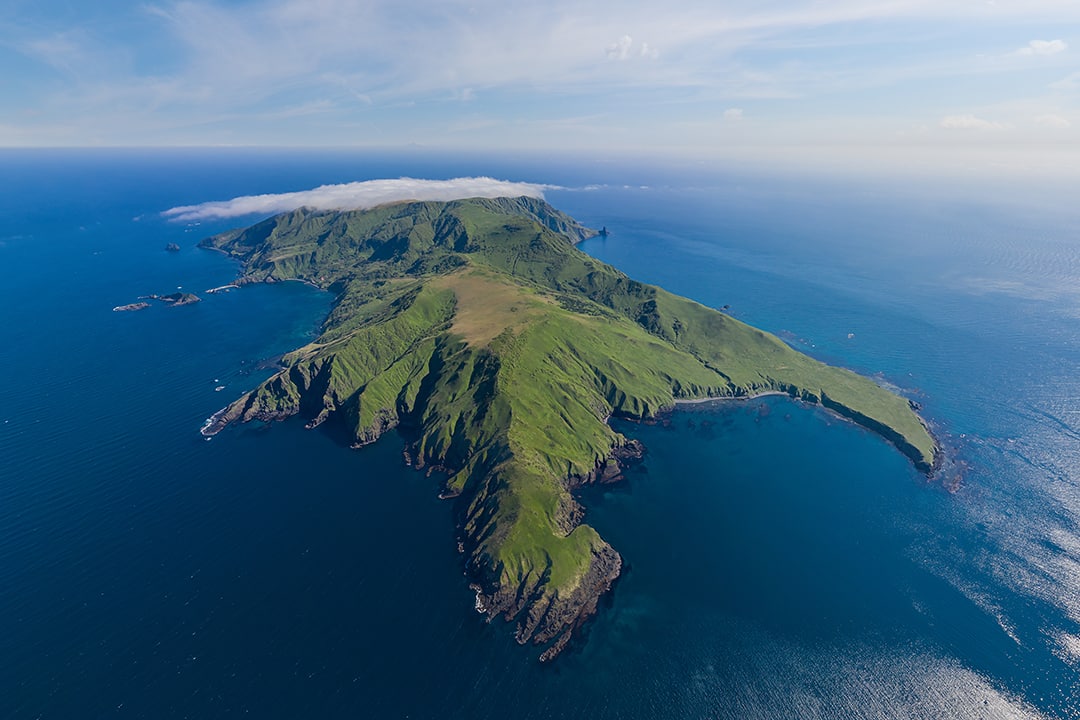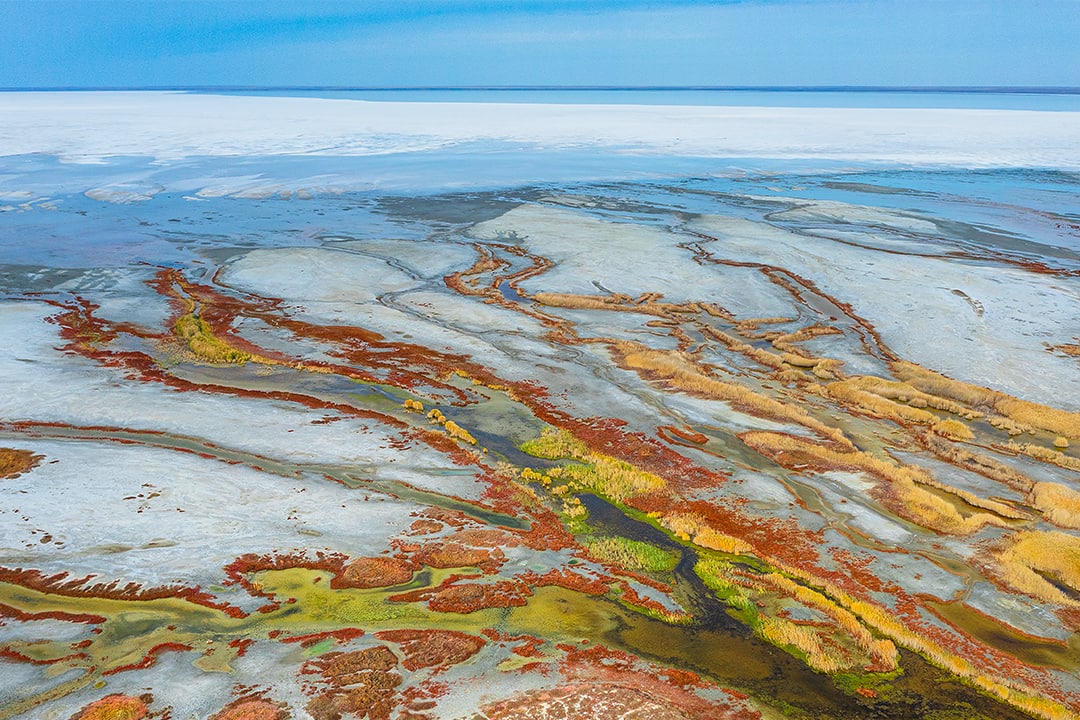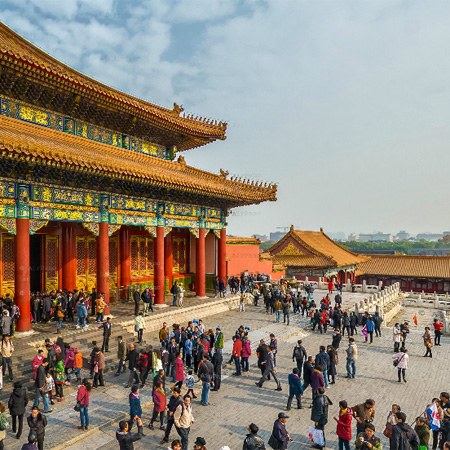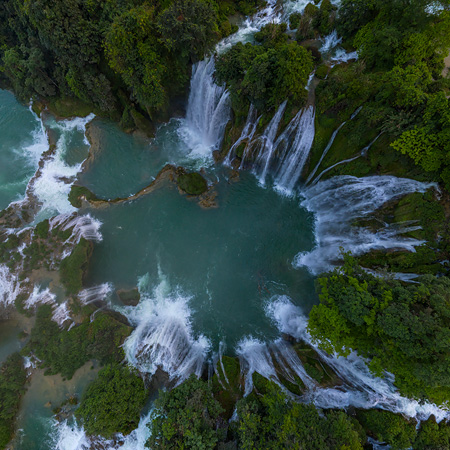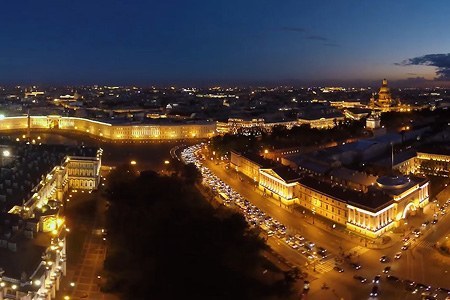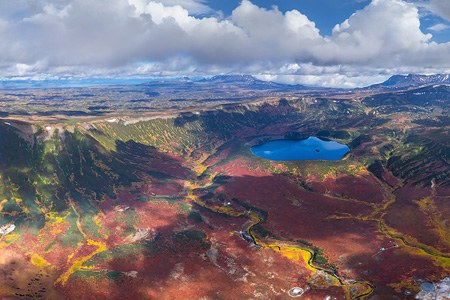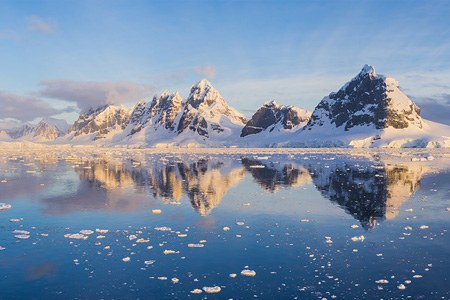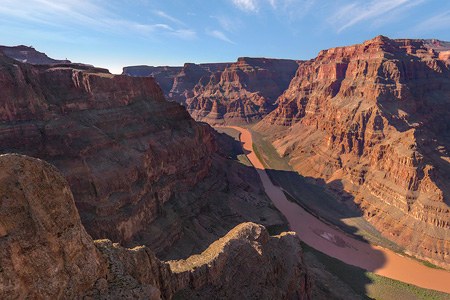Saint Petersburg, Russia
St. Petersburg is a city built on orders. Once having chosen the most convenient place where from it would be easy to threaten the Swedes, Peter I ordered and the construction started. In the history there aren't so many cities which were built in short terms at sovereign's command, but those are even less which could save their architectural aspect through ages.
St. Petersburg was lucky: its buildings had been created before 1917, has almost completely been saved and now they are about 18 thousand. Due to that fact the center of the city represents a harmonic architectural ensemble as well as it has another very special detail which is a scope and plenty of water (10% from the total area!) that make St. Petersburg unlike other cities of the world.
Another zest isn't so good - it is a legendary constant bad weather. The reason is still the same - water with its numerous local rivers both natural and artificial as well as bogs and lakes. The main arctic front also plays its role giving rise to the cyclones: a warm air mass of the middle latitude collides with a cold air mass of the high latitudes. These cyclones often affect St. Petersburg bringing floods, strong winds and gloomy clouds when it rains cats and dogs.
Our team of photographers was waiting for a sunny day in St. Petersburg so long that we could write a story about this. But, it seems to me, that it's better to say a few words about this beautiful city.
Both panoramas were shot over the Neva's area of water. There are the most outstanding monuments of St. Petersburg. One of the first city's buildings is the Peter and Paul Fortress (Night Flight panorama). Its foundations were laid on May 16 (27), 1703. More probably, the Swedes were so frightened by the fact of the construction that the fortress didn't serve as a defensive bastion. The Peter and Paul Fortress has never been used with its direct purpose but many years it was a sign building for "whenever an opportunity presents itself" and after the revolution it functioned as a jail for political prisoners.
In 1925 Leningrad Council resolved to destroy the fortress and to build a stadium instead. Fortunately, this resolution was cancelled. Now on the territory of the fortress there are a lot of museums, cafes, concert grounds including the Mint.
Besides, the highest Russian cathedral is that of Peter and Paul. The height of its belfry with a golden spire ended with the figure of a flying angel is 122.5 meters. Also there is a burial vault of the Romanov's royal dynasty. And daily at midday a signal gun shoots there. Its sound is so loud that it's better to be away from the fortress's walls at that moment. It is perfectly heard all around the center of the city.
Both panoramas demonstrate the Trinity Bridge (to the left from the Peter and Paul Fortress) which is the most beautiful bridges of St. Petersburg. There is a legend that in the middle of the 20's the soviet test pilot Valery Chkalov realized his famous flight by Hydro-plane Sh-2 exactly under this bridge. He was inspired to do that by his French colleague who could fly under the Eifel Tower for the considerable sum of money. But in Soviet Russia the only prize for Chkalov wbecame a guardroom and hooligan's fame.
The Spit of Vasilievsky Island (Morning Flight panorama) has been a cultural and business center of the city still from the age of Peter I. In the 1720's the foundation of the Kunstcamera (it was the first Russian museum) was laid there. Then the port, bourse, customs and warehouses were moved there. The palaces and educational institutions were also built there. In 1810 the Spit was decorated by two Rostral Columns. One of them served as a lighthouse for the vessels on the Malaya Neva, another one showed the way to the Bolshaya Neva. It was necessary to move the river by 100 meters for them. Now they are monuments of Russian Navy Glory and used only during the festivals: these days their lights are on.
Telling about the lights, the first Russian experience of a street electric lightning was held particularly in St. Petersburg: in 1879 the Liteyny Bridge was lightened (it is the last from the left bridges in Evening panorama).
In both panoramas more or less the Winter Palace and Palace Square are seen. In the palace, where the tsars killed time of St. Petersburg endless winters, now there is the biggest world museum, the Hermitage, situated. In its collection there are about 3 million museum pieces. It would take someone 8 years to revise the museum pieces if to look at one museum piece at least one minute. Besides, to look through all the museum pieces it would need to walk the distance of 20 kilometers.
Palace Square is decorated with the Alexander Column. It is a unique monument of 47.5 meters height and its weight is about 700 tons. It is the highest monument in the world made of the whole granite. The column isn't fixed with anything and stands on the pedestal only under its weight. It is said that inhabitants of the city were afraid of walking nearby because they were frightened that the column would fall. The monument's author, Auguste de Montferrand, had to walk near the column daily to ensure its safety.
To the right from the Hermitage, along the riverfront, there is a splendid complex of buildings of the Russian Admiralty. The height of its spire is 72 meters. A ship-weathercock on the spire's pick weights 65 kilograms and it's covered with 2 kilograms of gold. Probably, these two kilograms of the precious metal so much worry the inhabitants of St. Petersburg that they make up another legend of the city. It seems to them that inside the gilt ball on the Admiralty's spire there is a hidden golden moneybox where the samples of all the golden coins issued from the day of St. Petersburg foundation are kept. Also, in the prow of the ship-weathercock the personal casket of Peter I can be found.
The casket in the ball really exists. However, there is no gold but the message about the works of spire and ship renovation for all the time that the building stands, as well as about the people who made such works. At the same time, the moneybox is still not found.
By the way, many people suggest for mistake that Saint Petersburg is named in the honor of its founder who was Peter I. But it isn't so: the city is named in the honor of the first Russian imperator's heaven protector - apostle Peter. But does it matter much? We invite you to admire the sights of the wonderful city from the bird's eye view.
29 October 2010
Read more
360° Video
